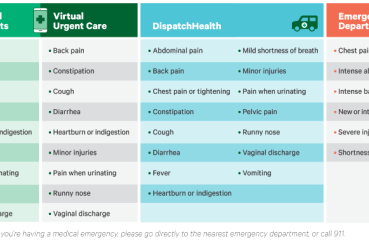When you're feeling under the weather, heading out to see a doctor is likely the last thing you want to do.
Good news: You don’t have to. Thanks to virtual care, you can talk with a provider within minutes and get the help you need without leaving the comfort of your home.
“Our team at RUSH On Demand is readily available to see you,” says Rick DiSanto, PA-C, lead advanced practice provider for telemedicine services at RUSH. “We are an urgent care, so you can make an appointment the same day and be seen. That's the biggest benefit of our program.”
Ready to try virtual care? Here's what you need to know.
How it works
When you meet with a virtual care provider, they will ask you questions about your health and symptoms before prescribing a treatment — just like an in-person appointment.
“The sooner you know you’re not feeling well and the sooner you get seen by a virtual care provider, the better the outcomes,” says Afroz Hafeez, MD, program manager for telemedicine services.
Like an in-person visit, you can get care for a variety of conditions — not just for a cold or the flu — including the following:
- Asthma
- Acid reflux
- Back pain
- Constipation
- Coping and stress
- Diarrhea
- Headaches
- Medication refills
- Minor burns
- Minor injuries (Strains and sprains)
- Painful urination
- Pink eye
- UTIs
- Seasonal allergies
- Sinus issues
- Wound checks
A common myth about virtual care
One of the biggest differences between the two types of appointments is whether you’re in the same room as your provider. But DiSanto says that doesn’t mean you can’t get the help you need.
“It’s a common myth I hear from patients: That there’s nothing virtual care can do for them, but they came to us as a last resort,” he says. “But just because a provider isn’t physically present with them doesn’t mean we can’t treat them. We reassure them that we can.”
Virtual care providers can usually determine a diagnosis and the right care plan just based on your medical history and symptoms, DiSanto says. Also, you can help with a physical exam during your virtual visit, such as checking your pulse or temperature.
Some cases may require more in-depth, follow-up care, Hafeez notes. For example, if you need lab work done, an in-person visit would be a good option to consider.
Tips to prepare for your virtual visit
Whether it’s your first time using virtual care or not, being prepared can help you make the most out of your visit.
Here are a few tips to keep in mind:
- Make sure you’re signed up or have access to MyChart. If you need help registering or have a question about your account, please call (312) 563-6600 for more information.
- Complete the check-in process before your appointment. Checking in beforehand can help your appointment start on time.
- Make sure your information is up to date. This includes your medical history, any medications and your closest pharmacy.
- Create a comfortable environment. Choose a setting for your appointment that's quiet, private and well-lit.
- Test your technology beforehand. Make sure your camera, sound and Wi-Fi are all working properly to avoid interruptions during your appointment.
- Have your health monitoring equipment ready, if available. “Since COVID-19, many people have pulse oximeters or a pressure cuff at home now,” DiSanto says. “So, we'll ask you, ‘Do you have them available? And if so, can you give me your most current blood pressure or check your oxygen levels?’ Although not required, this helps to better treat you.”
- Be detailed about how you’re feeling. “Take your time and be as detailed as you can about your symptoms,” Hafeez says. He also suggests having available a log of your symptoms, if you’ve been experiencing them for a while.
If you need help with your cold or flu symptoms, get care today via RUSH On Demand. In case of an emergency, call 911.




